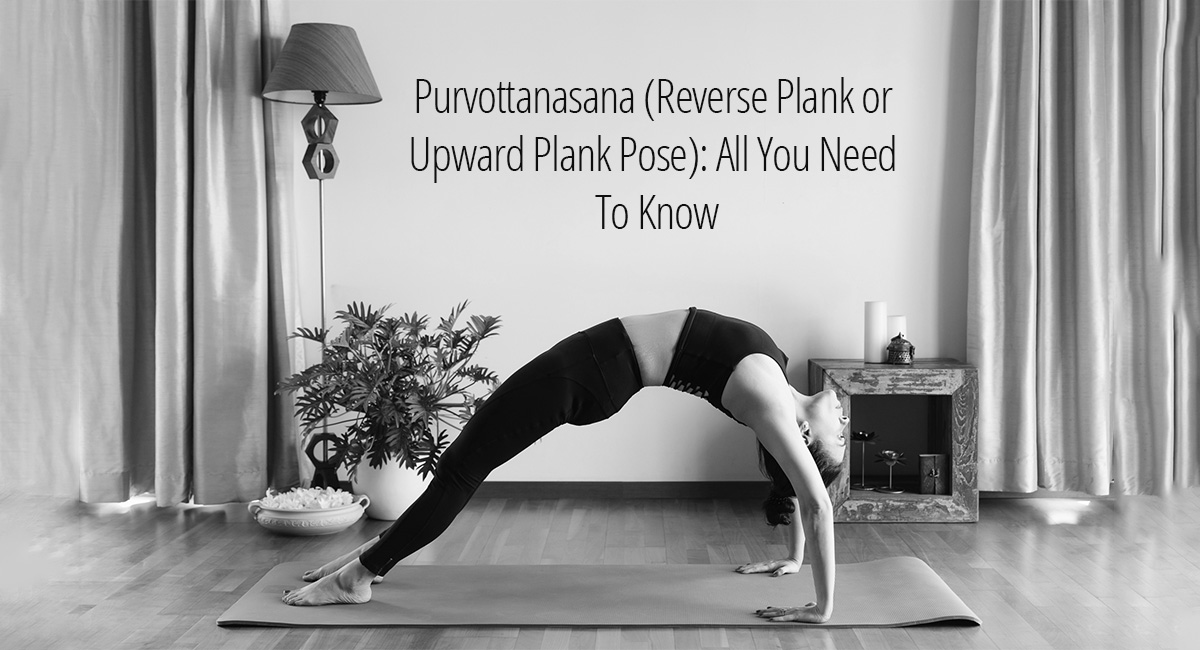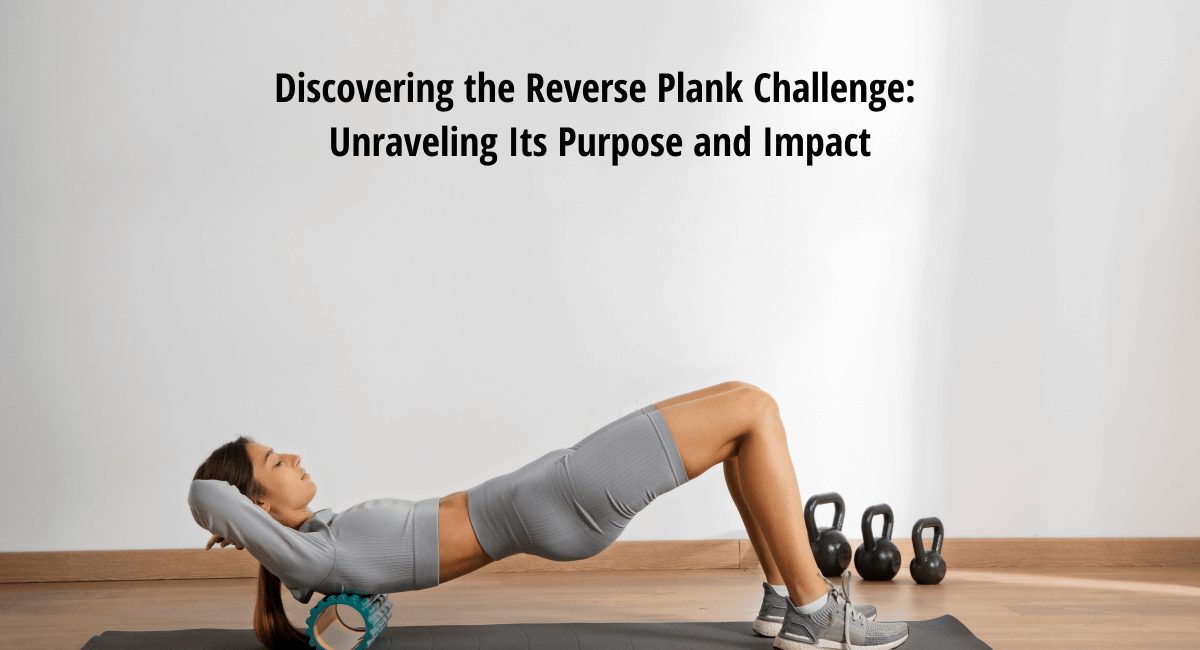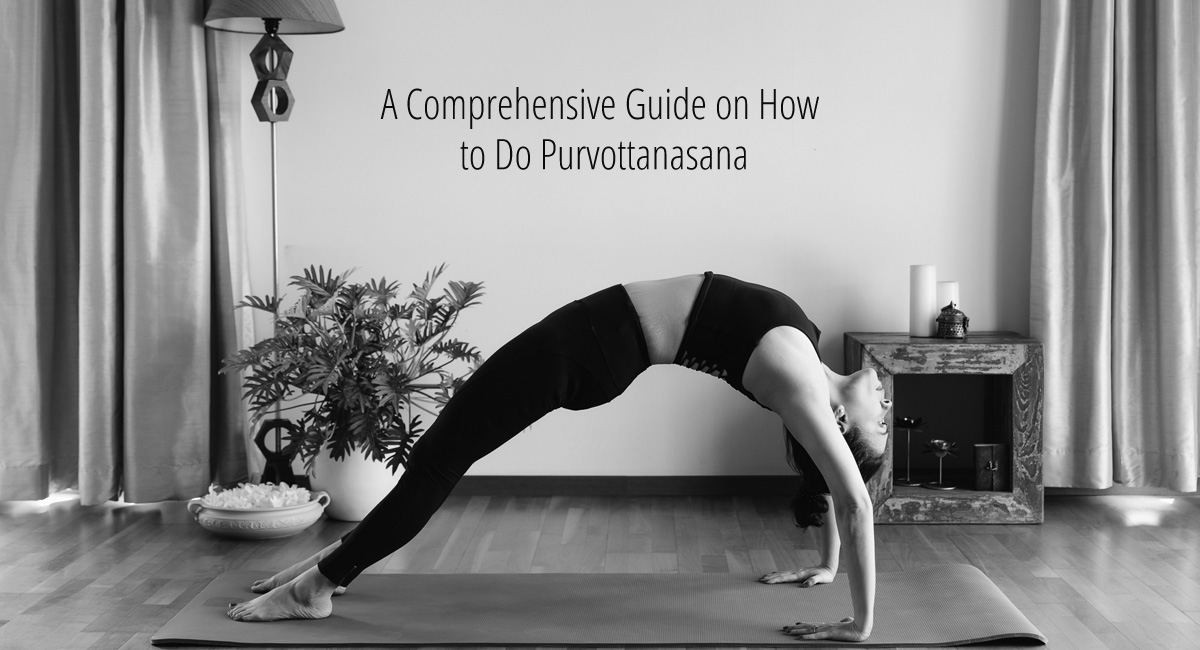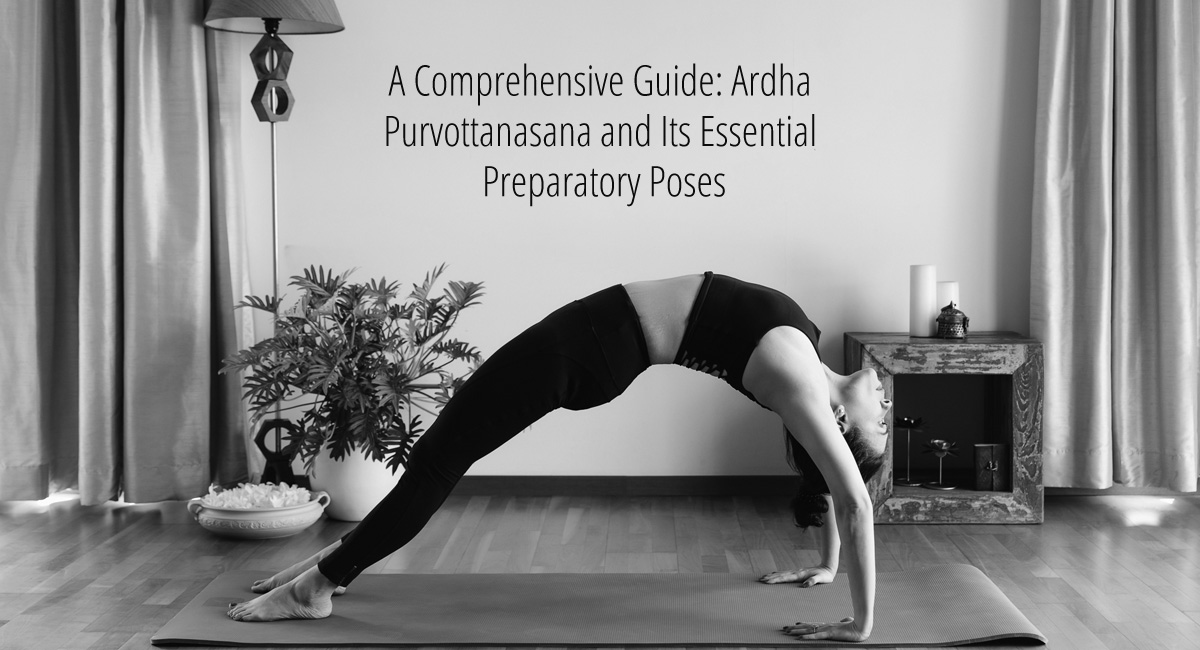
Purvottanasana (Reverse Plank or Upward Plank Pose): All You Need To Know
Table of Contents
The importance of Yoga in contemporary lifestyles has been comprehensively discussed in the past, but for this particular article, the focal point will be a particular asana known as the Purvottanasana. Also known as the reverse plank or upward plank pose, this asana brings about many positive impacts that strengthen the body and build endurance.
What is Purvottanasana (Reverse Plank or Upward Plank Pose)?
The yogic philosophy has many beliefs which have been incorporated through the understanding of astronomy and astrology. The word Purvottanasana can be deconstructed into “Purvo”, meaning east, “Ut” meaning intense, and “Tan” meaning stretch.
The Purvottanasana is a hard stretch to the east. As the sun rises in the east and sets in the west, the east is considered a direction for new beginnings. As the body moves into the reverse plank pose, the core muscles of the body are stimulated, and along with the support of the shoulders, arms, and leg muscles, the asana is completed.
Health benefits of the Purvottanasana
Much like all other yoga asanas, the Purvottanasana also bears multiple benefits that improve body endurance and fitness. Some of the main health benefits that arise through the practice of this asana have been mentioned below:
Here are health benefits of the Purvottanasana:
- Strengthens the body’s muscles, particularly the shoulders, ankles, wrists, and thighs.
- This asana is beneficial for all gynecological diseases.
- Asthma is addressed by strengthening the respiratory system.
- As it replenishes the brain cells, it relieves stress, tension, and anxiety.
- Improves the function of the liver, spleen, and kidneys
- Helpful in reducing abdominal fat and getting rid of a bloated stomach.
Related Blog: Top 8 Amazing Health Benefits of Purvottanasana (Upward Plank Pose)
How to do Purvottanasana (Step by Step)
The following section will provide you with a step-by-step description of how to proceed with the Purvottanasana.
- Begin in Dandasana (Staff Pose), with your legs extended forward and hands close to your hips, fingertips looking forward.
- Keep a modest amount of space between your heels and touch your big toes together.
- Draw your toes nearer your knees by flexing your ankles. Continue with your big toe mounds.
- Firm your outer ankles into your midline and rotate your inner thighs down.
- Lean back slightly and move your hands about 8 inches back.
- Move your shoulder blades in and lift and open your chest as you inhale.
- Exhale by pointing your feet, reaching towards the floor with your big toe mounds, and lifting your hips.
- With your big toe mounds, press toward the floor. Rotate your inner thighs in and out, directing your buttocks to the backs of your knees.
- Lift your thoracic spine toward your sternum and your sternum toward the ceiling by pressing down with your hands. Inflate your sternum.
- Allow your head to slide back, ensuring that the curve of your neck continues the curvature of your upper back.
- Inhale and exhale 5 to 10 times. Exhale by pressing into your feet and hands; inhale by pressing into your hips and chest.
- Return to the ground.
Purvottanasana Variations
The Purvottanasana is a very intense posture to hold and may induce some discomfort. Hence there is a variation to the pose that is the reverse tabletop pose or the Ardha Purvottanasana. The reason for this variation is that when the legs are completely stretched out during the Purvottanasana, it may get difficult to balance the entire body weight on the palms. The reverse tabletop pose allows the knees to be bent and hence the bodyweight gets distributed between the hands and the feet.
Instructions:
- Begin by sitting on the floor, knees bent and feet flat on the floor.
- Put your hands on the ground behind you (palms facing down and fingertips facing forward).
- Begin slowly lifting your hips and pressing your chest upward.
- Avoid leaning back with your head.
- Keep your neck in line with the rest of your spine instead (or your chin may be tucked slightly).
- Hold for a few moments, then slowly lower your hips while you draw your chin in toward your chest.
Purvottanasana Preparatory Poses
In order to reap the maximum benefits from the practice of the Purvottanasana, it is important to practice certain poses before it in order to prepare the body for that particular stretch that the asana has to offer. These preparatory asanas are also extremely beneficial in building body endurance and flexibility and have been briefly mentioned below.
- Dhanurasana – Dhanurasana is named for the bow-like shape that the body assumes while practicing it. A well-strung bow is a benefit to a fighter, and a well-stretched body with good posture helps keep you flexible.
- Setu Bandha Sarvangasana – This asana is one of the asanas that manages to spread across the basic and intermediary levels of yoga. It is a back-bending yoga posture that manages to stretch the entire back up to the sacral section of the vertebrae.
- Supta Virasna – Also known as the reclining hero pose, this asana is again a backward bend with your legs also facing backward. This is an intermediary pose and should not be practiced if you have weak knees or cannot sit on your buttocks. This asana is also one that is not recommended during menstruation and hence it would be better to avoid or consult your doctor before practicing this asana.
Scientific Aspects of the Purvottanasana
On a metaphysical level, this Pose refers to opening the way to the interior light. The heart is supposed to be sensitive, yet this asana challenges that notion. It allows the heart to elevate and the internal light to rise. We frequently create barriers and stamp our limitations.
This asana unlocks the doors and allows us to see past our fears and anxieties. The huge quality shaped in the arms, shoulders, and spine provides us with the courage to flee the obscurity and sparkle. The shoulders, core parts, and legs that are situated beneath the heart provide us with the huge quality to stay in this stance.
Precautions to Purvottanasana
- Stretching the body beyond its limits may cause muscle tension.
- People with the following conditions should avoid doing this asana: a weak heart, wrists or ankles, high blood pressure, stomach ulcers, hernia, cervical spondylitis, neck pain, knee pain, and back or shoulder injury.
- During the time of menstruation, it is advised to consult a doctor before practising this asana as it is an intense posture to hold.
Summary
In a nutshell, the benefits of the Purvottanasana are many and its practice induces a healthy lifestyle. But since this is an intermediate asana, it must be practised under the right guidance. The entire arrangement and choreography behind the asana involve many preparatory asanas which in themselves are highly beneficial. But in order to practice these asanas, certain precautionary measures must be taken in case there are some health or physical deficiencies present in the person practising.
The entire approach of yoga is to understand the body and then slowly push the body to achieve greater goals as endurance and flexibility are enhanced and coupled with the calming impact yogic practices have on the mind. The Purvottanasana is an extremely scientific and well-choreographed pose that enables intermediate students to stretch their bodies and increase the strength in the back, arms, hands, and feet. With the stretching and opening of the chest cavity, the entire body gets well oxygenated which eventually calms the mind and induces a multitude of health benefits. For more information, you can log onto our official website.
For more information on Yoga Classes & Workshops, you can enquire here.

I am a Pune based artist, Kathak dancer, Dance Movement Therapist, and an avid Yoga practitioner/ teacher. I am also the Director at the Sakal Media Group, a Trustee of Pune Blind School and Nirdhar Trust.
Being a part of Sakal Media Group, with its strong foundation of service and ethical journalism, I am deeply committed in making this world a better place by pushing boundaries, giving opportunities to others, following my convictions, helping others make better choices and to tell powerful stories that will help reshape the world we live in.





